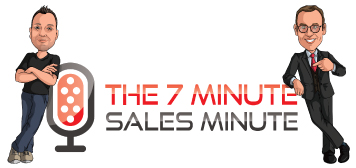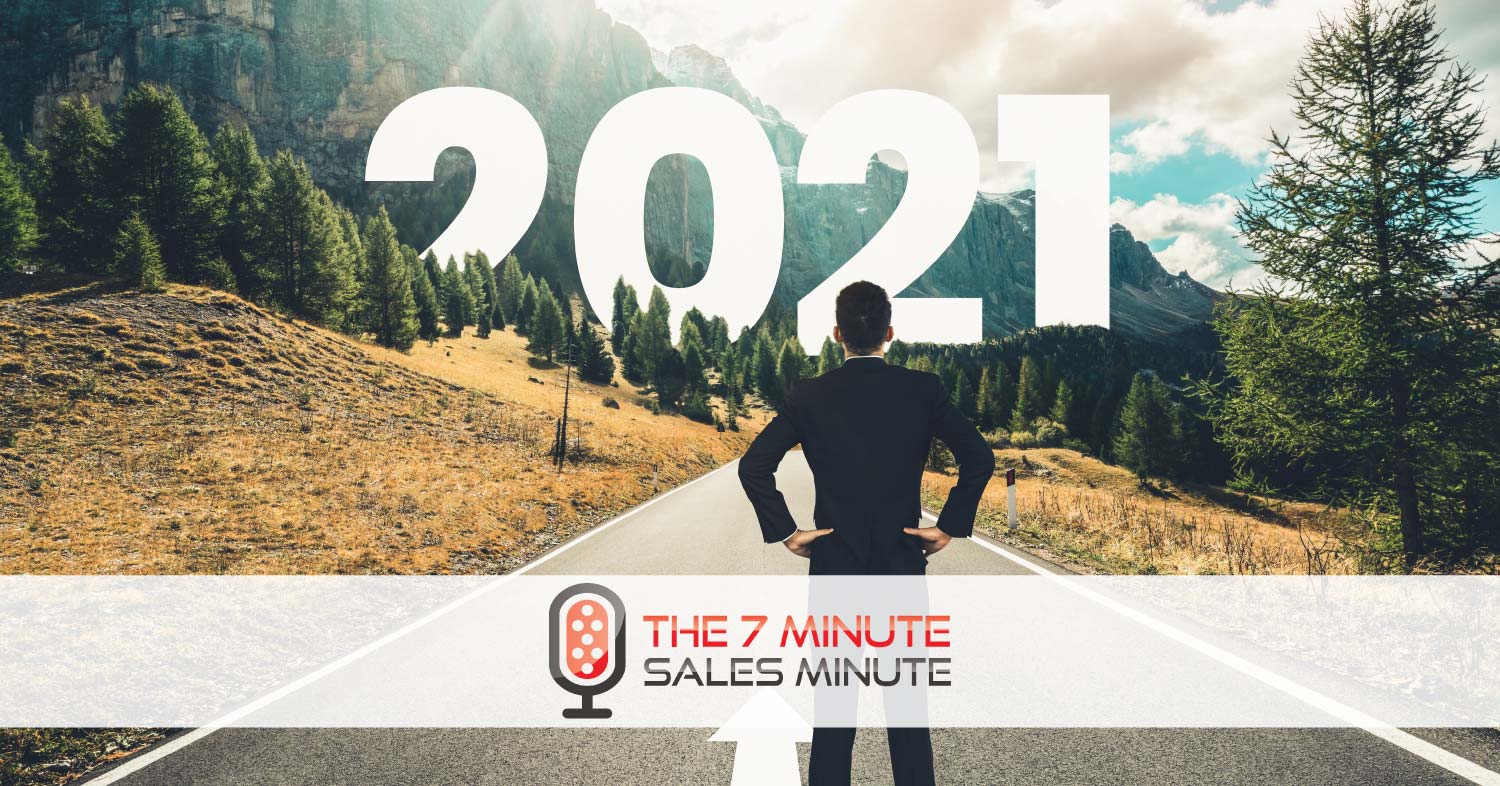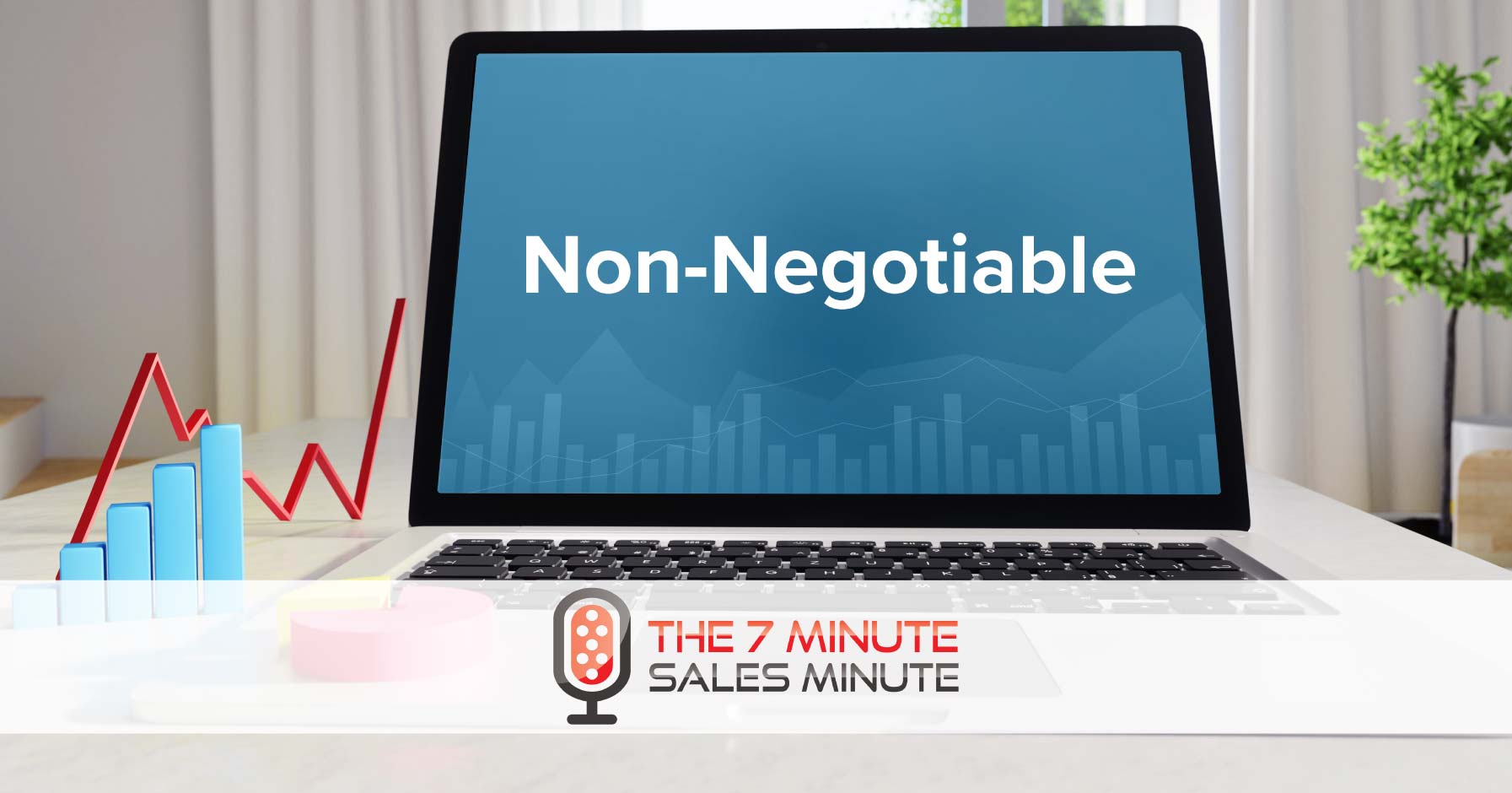
In this episode, Scott and Jon help you develop and maintain your brand.
What sets you apart from your competition?
Why should a prospect choose you?
Read the full transcript
Jon Dwoskin: Welcome, everybody.
Scott Fishman: Good morning, Jon.
Jon Dwoskin: Scott, good morning. How are you doing?
Scott Fishman: Doing great today, man.
Jon Dwoskin: Alright. Tell me why. What are you doing that’s so great?
Scott Fishman: First and foremost, we’re doin’ a podcast.
Jon Dwoskin: I know. I mean, I’m great too, yeah.
Scott Fishman: People have been tweeting. I’ve been getting Facebook messages. People coming to my house saying, “When’s the next episode dropping?”, and we’re finally giving it to ’em, so I think it’s great.
Jon Dwoskin: Yeah. Right, it is. Same. People have been knocking down my door and emailing like crazy. But, in all seriousness, I do want to thank the people who are listening ’cause we have had a consistent, good amount of downloads through our time. So thanks so much for listening. So we aim to please and provide information and we’re gonna do that today.
So, Fish, why don’t you tell everybody what we’re gonna chat about?
Scott Fishman: We are gonna talk about what sets you apart from your competition. What is your brand, and why should someone choose you over anyone else?
Jon Dwoskin: Yeah. I think something to start off is to ask yourself a question, and be really truthful with yourself, and ask what kind of brand loyalty do your clients have to you? I think that’s a good way to start. Just look at your pipeline of sales and say to yourself, “Okay. Are these clients loyal to me? And if they are, why? And if they aren’t, why not”? And I think that’s maybe a good starting point to kick that off.
Scott Fishman: No, that’s huge. I think the “why not” is actually great. We always talk about this and it’s a recurring theme with us. We learn a lot from our failures, so learning why people don’t want to work with us or why people don’t come back to us is almost more important than why they do come to us, ’cause we can correct those behaviors that are causing people to not want to come back.
Jon Dwoskin: Right. Just to kinda start off the list of “why nots” and what can ruin our brand loyalty. I think one of the worst things that we can possibly do is lack follow-up. I know we talked about this in some way in every podcast possible, but if we are not following up and doing what we say we’re gonna do, our brand loyalty, in my opinion, just goes down the toilet and creates a completely negative experience.
Scott Fishman: Absolutely. If you can’t call someone back when you say you’re gonna call them back, or email them when you say you’re gonna email them, or come through with a report or a proposal in a timely fashion, what are you gonna do when the actual meat and potatoes comes down and we have to actually put rubber to the road?
Jon Dwoskin: Right, right. And it just destroys all trust in the relationship and, in my opinion, it just goes downhill from there.
Scott Fishman: I like that.
Jon Dwoskin: Yeah. So, what are some other things, I mean, just as far as the “why nots” people?
Scott Fishman: I mean, some of it is really simple, just actually treating people with respect. You know, I can’t tell you how many times I’ve switched, and I talk about the front desk syndrome. Like, people that work at front desks have the easiest job and the hardest job because people are coming at them and trying to make appointments and whatnot. We talk about leaving a hair salon because someone who sits at the front desk is rude, or leaving a doctor’s office because the people who work at the front desk are rude. That can turn a client away immediately, like a doctor probably doesn’t realize they lose a patient because the people who work at their desk or the nurses might not treat people with respect.
Jon Dwoskin: When you talk about brand loyalty as a salesperson, one of the things I think when you talk about the doctor not knowing, it is critical that it starts from the top, and the top needs to own that concept, and the top needs to own exceptional client experience, customer service, etc., however you want to brand it. They need to make sure that the proper training is in place internally, ’cause nobody wakes up and is exceptional at customer service or at creating an ultimate experience. I mean, if you look at the Disneys, if you look at the Amazons, I mean, these people are working hard to not only build, but train their people to exceptional standards.
Scott Fishman: Yeah.
Jon Dwoskin: Yeah.
Scott Fishman: And if you think about the very first experience you have with anything, like think about going to Best Buy, what happens right when you walk in there every single time?
Jon Dwoskin: There’s a greeter.
Scott Fishman: There’s a greeter. He’s also a security guy, which is kinda cool, but – or gal -, but there’s a greeter that says, “Hello there”, immediately welcoming you into the store.
Jon Dwoskin: Right.
Scott Fishman: They’re not just giving you a dirty look and, you know, looking up and down or attacking you, trying to sell you something. They are just welcoming you.
Jon Dwoskin: Right, and Meijer does the same thing. It makes you feel great and you know it’s gonna be there.
Scott Fishman: Yeah, absolutely.
Jon Dwoskin: Yeah. So, what else as far as brand loyalty? What creates brand loyalty for whether it’s clients to repeat business or for prospects that we want to get into the door?
Scott Fishman: Well, I think it goes along with treating people with respect, but also following through like we talked about. And being personable. Coming through and being creative. Don’t just give them one option, don’t just give them the option everyone else has, even if you know they’re gonna want the vanilla of whatever product you’re selling. Give them other options. Show them that you are knowledgeable and you know what you’re talking about, and you’re able to do something outside of the ordinary, because, again, we’re trying to set ourselves apart from every other Tom, Dick, and Harry out there.
Jon Dwoskin: Right.
Scott Fishman: We want to make sure that people see the value in working with us.
Jon Dwoskin: Yeah. I was listening to a podcast this morning, and they talked about the Ford Method. Have you ever heard of that?
Scott Fishman: No.
Jon Dwoskin: So, basically, what it talked about was F-O-R-D. F is for family, O is for occupation, R is for recreation, and D is for dreams. What they talked about on the podcast was that, if you know and can connect with someone on two of the four of those, then you begin to own the relationship on a deeper level. So, it’s just like a good acronym to kind of think about. They also talked about how you open the door, talk about somebody’s family if you don’t know them or if you’re wherever you are and you just kind of move from there. So, it’s kind of an easy thing to think about to grow your relationship and, ultimately, grow your brand.
Scott Fishman: Right.
Jon Dwoskin: Yeah.
Scott Fishman: I like that. Here’s something else that we talked about a little bit off-air. I like that “off-air”.
Jon Dwoskin: Yeah.
Scott Fishman: Off-podcast. But here is something that you and I talked about on the side: what is your social media presence out there? What is your brand that is passive, meaning it’s not something that you’re actually spouting to the client or sending them emails, or sending them pamphlets or anything like that. What is your brand if they search for you themselves, because you gave us a statistic. What was it? 64% of people?
Jon Dwoskin: 58% of people are doing online research before they communicate with you.
Scott Fishman: Actually, it just got updated. Now it’s 64%.
Jon Dwoskin: 64%, no but –
Scott Fishman: It’s growing.
Jon Dwoskin: Right. Well, as of ten minutes ago, it was like 58% of Americans perform online research about the products or services that they’re considering before purchasing, so that’s a big number.
Scott Fishman: Right.
Jon Dwoskin: Yeah.
Scott Fishman: I think, not only knowing what your presence is out there, what is your, you know, do you have a Facebook presence, do you have a Twitter presence, do you have a blog, a website of your own? What are you doing out there to actually create that brand?
Jon Dwoskin: Right.
Scott Fishman: So, if someone searches for you, specifically, along with your product, what are they gonna see?
Jon Dwoskin: Right, and you’re kind of pre-suading them a little bit about why you’re credible and an authority figure in that specific space, whatever you’re in, because, and you use this term, it’s social proof that you kind of know what you’re talking about.
Scott Fishman: Yeah.
Jon Dwoskin: So, it’s really important to have a presence, to have your brand presence, so people can get to know you, feel connected. By the time they call you, they kind of do know a little bit about the FORD method, which is what I listening to about this podcast. They know a little bit about your family and what you do for an occupation. They know a little bit about your dreams, and they know what you’re doing recreationally. So it connects them on all those fronts, now that I think about it.
Scott Fishman: Right, and you talked about what you’re doing recreationally, and this is something that we always talk about is do the right things recreationally and in public.
Jon Dwoskin: Yeah.
Scott Fishman: You know, your presence online should not be you doing tequila shots at some bar or whatever. Just doing random stuff. It should be things that actually pertain to you and what you want people to perceive you as. You know, don’t be doing something in public that you shouldn’t be doing. Don’t embarrass yourself. Act with integrity.
Jon Dwoskin: Right. I mean, the majority of people who are listening to this are salespeople and they’re looking to grow their business. So, people want to do business with people of a high caliber and they want to do business with people that make good decisions, and they want to do business with people they know are going to be sharp and, if you’re posting stuff like that all weekend, then your client’s going to know they don’t want to talk to this person on Monday.
Scott Fishman: Right.
Jon Dwoskin: I mean, how are they going to possibly be sharp? You know, they’d been drinking, doing shots, and eating nachos all weekend.
Scott Fishman: Damn nachos.
Jon Dwoskin: Right?
Scott Fishman: So, that’s great. I think one thing that we can do with that online presence, which is big, is know the questions that people are going to bring up about your industry.
Jon Dwoskin: Yeah.
Scott Fishman: Know the things. For me, I do mortgages, so people want to know about interest rates. That’s the one thing that they always talk about is interest rates, and they want to talk about this one program, called the HARP program, that everyone advertises. So, what you can do is you can make sure you shape that conversation with what you’re posting online to actually steer them in the right direction.
Jon Dwoskin: Yeah.
Scott Fishman: Because, if I sold cameras, I don’t want someone coming in and just saying, “I want the most megapixels”, because the most megapixels may not be the best camera. I want them to actually be educated on the questions they should be asking so we can shape that narrative on our own before they even come through our door, so that we’re asking the right questions or they’re asking us the right questions.
Jon Dwoskin: Yeah. So important. So important.
Scott Fishman: Along those same lines, if we know our competition, we can actually create that same level of knowledge where they ask the questions to kind of disqualify some of our competition at the same time.
Jon Dwoskin: Well, just going back to what differentiates you, how you build your brand, you’re differentiating yourself by understanding your competition and knowing how to sell in a way that promotes you and your strengths to their weaknesses.
Scott Fishman: Right.
Jon Dwoskin: Yeah.
Scott Fishman: So, also, let’s talk about that social proof method like we were speaking of. There’s one thing that is inevitable. It’s going to happen. At some point, you’re going to have a customer who you cannot make happy. No matter what. So, there’s going to become, at some point, a bad review. A bad comment someplace. So, if you have an online presence, be ready for it. It’s coming. It’s going to happen at some point. I actually got a one-star review on one of my books.
Jon Dwoskin: You did?
Scott Fishman: Yeah. It was kind of cool. I liked it because it happened, you know. You’re waiting for it.
Jon Dwoskin: Yeah, and what did you do about it? Did you email them or put a reply?
Scott Fishman: I actually sent them a message and offered them a copy of one of my other books so they can let me know if that was good in their eyes. So, I wanted to find out, I wanted honest feedback, but I also offered them a free book as well to see if I can kind of persuade them or maybe change that.
Jon Dwoskin: Right. You know, feedback is key, and it doesn’t always feel great. You know, the one-stars or feedback that maybe you get from your clients, or potential prospects, or whomever. But the good news is that the feedback, if taken correctly, will help you grow your game. It’ll get you a little bit more focused. It’ll get you focused on who your ideal client is, and you grow a ton from feedback, even if it’s very constructive and doesn’t always feel good at times.
Scott Fishman: Right.
Jon Dwoskin: So, you know, don’t let it destroy you. Don’t let it own you, even though it might take a couple days to shed. The lessons are far greater.
Scott Fishman: Right. So, if we know that we’re getting that bad feedback, and it’s inevitably going to come, we need to prepare for it, right? Just like if you know the storm is coming, you’re going to pull down the storm windows or the window guards or whatever. You’re going to hunker down. You’re going to go buy extra water. You’re going to make sure your family’s safe. We know the bad reviews are coming, so we need to bolster that by getting good reviews. We need to encourage every customer we work with to leave us a good review because, you quoted the stat, I think it takes a hundred and thirty-seven good reviews to offset one bad review.
Jon Dwoskin: Well, it was actually twelve positive experiences to make up for one unresolved, negative experience.
Scott Fishman: Oh, you’re right. It was only twelve.
Jon Dwoskin: But, we could probably find something to support that stat as well.
Scott Fishman: Yeah. 70% of all statistics are made up.
Jon Dwoskin: Right. But, I will say this. You are right, because if you take all your information and you’re putting blogs out, and you’re doing videos, and you’re consistent with what you’re posting and you’re posting good content, and you’re giving your target audience things that they need, and you’re building a presence that gives you the foundation, and the authority, and the credibility that you need, then sometimes the bad review, it doesn’t line up. It’s so out of balance for all the other good reviews and what people see on your site. That’s another way, I think, to combat it. You just keep consistent and keep on giving your ideal clients the information that’s relevant to them because, I think, as part of social media and writing books and everything, you do your best to attract your clients and repel others. And you’re going to repel people, and that’s okay.
Scott Fishman: Yeah.
Jon Dwoskin: It’s part of the equation.
Scott Fishman: It dilutes the bad reviews.
Jon Dwoskin: Yeah, well said.
Scott Fishman: Well, thank you.
Jon Dwoskin: You’re welcome.
Scott Fishman: So, Jon, I think we actually have a lot of content in this one. Hopefully, there are some good takeaways for folks. And, we want to say, again, sorry for taking a couple weeks for coming out but, like Jon said earlier, good things come to those who wait. So, thank you for listening again, everybody. We really appreciate it.
Jon Dwoskin: Have a good day everybody.




